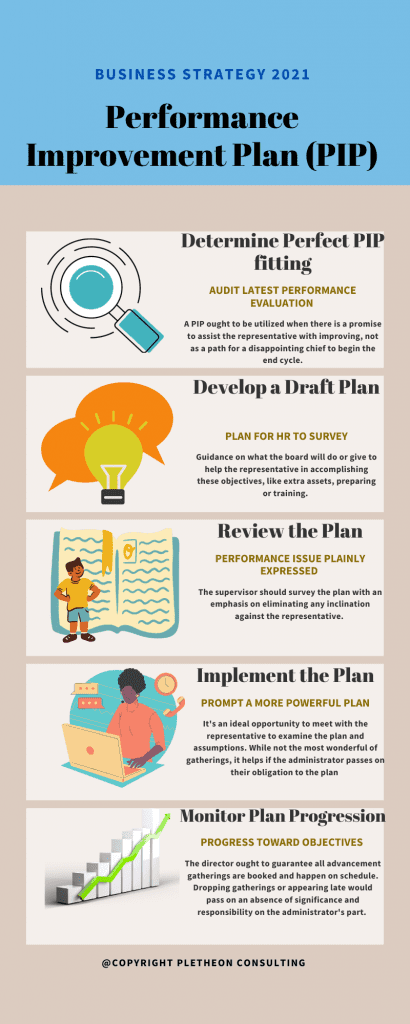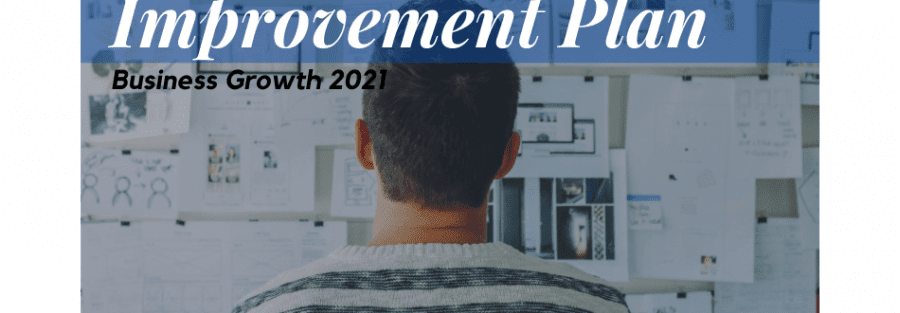Performance Improvement Plan (PIP) gets negative criticism. What’s more, numerous individuals compare being put on one with being terminated (which is just at times obvious).
While the earnestness of them shouldn’t be overlooked, if you are put on a PIP, realize that all expectation isn’t lost. You can turn your performance around—and save your work!
Meaning of Performance Improvement Plan (PIP)?
A performance improvement plan is a proper archive expressing any repetitive performance issues alongside objectives that a worker needs to accomplish to recover great remaining at the organization (ordinarily with a particular timetable to finish the plan). In case you’re being put on a PIP, your administrator and HR will doubtlessly meet with you to go over it and answer any inquiries you may have.
In layman’s terms, it resembles being put waiting on the post-trial process when you’re in school—you will be observed intently during this period. If you’re not effective in finishing your PIP toward the finish of the timetable, losing your employment is generally the final product.
If you’ve struggled to touch your goals, a PIP is supposed to give you solid approaches to change your performance. For most, knowing precisely how they can deal with improvement is sufficient to advance out of a droop (which means it’s unquestionably conceivable to prevail on one!).

Performance Improvement Plan PIP Explained
A PIP is intended to work with the valuable conversation between a staff part and their manager and to explain the specific work performance requiring improvement.
It is executed, at the caution of the supervisor, when it gets important to help a staff part improve their performance. The administrator, with contribution from the influenced worker, builds up an improvement plan; the motivation behind the objectives illustrated is to assist the representative with accomplishing the ideal degree of quality management.
The PIP varies from the performance advancement planning (PDP) measure in the sum and amount of detail. Accepting a worker is now taking part in the all-inclusive PDP measure, the arrangement and the assumption for the PIP should empower the administrator and staff part to speak with a more serious level of clearness about explicit assumptions.
Performance Improvement Plan Process
In all cases, it is suggested that the director’s chief and (HR) audit the plan for target input and endorsement. This will guarantee workers experience reliable, reasonable treatment across all divisions in the organization.
Before starting the PIP, the director should survey the accompanying six things with the representative to guarantee the plan is perceived:
- State the specific performance that should be improved; be explicit and refer to models.
- State the level of the work performance assumption and that it should be performed consistently.
- Identify and determine the help and assets that you will give to help the representative to succeed.
- Communicate your plan for giving input to the representative. Indicate meeting times, with whom, and how frequently. Indicate the estimations you will consider in assessing the representative’s advancement.
- Specify potential results if the performance guidelines you are setting up in the report are not met.
- Provide wellsprings of extra data like a representative handbook, instructional courses, and some other assets you accept will help the worker in improving their performance.
Use Performance Improvement Plan to Boost Productivity
A proper performance improvement plan (PIP) can resolve working environment profitability issues and help even the most improbable worker prevail in your association. Not all laborers are proficient at conveying projects on schedule. Some need a center or make additional work that defers finishing tasks. To address their interests, a manager may address a worker, trusting that this will fix the issue. Notwithstanding, albeit the worker attempts to improve, they experience issues finishing their assignments.
A very much planned PIP furnishes workers with the vital bearings for finishing explicit objectives. It is an effective instrument for expanding laborer efficiency and settling shortcomings in the process innovation.
The most effective method to establish a Performance Improvement Plan
The performance improvement plan (PIP), otherwise called a performance activity plan is an instrument to give a worker with performance lacks the chance to succeed. It could be utilized to deliver disappointments to meet explicit occupation objectives or to enhance conduct related concerns.
Results may vary, remembering improvement for generally speaking performance; the acknowledgement of abilities or preparing hole; or conceivable work activities like an exchange, downgrade or end.
Stage 1: Determine if a PIP is fitting
A PIP ought to be utilized when there is a promise to assist the representative with improving, not as a path for a disappointing chief to begin the end cycle.
Is there a genuine performance or conduct issue that can be validated? Request the director to make a list of the performance inadequacies, including dates, explicit information or definite explanations, and any past direction given to the representative. Audit the latest performance evaluation to check whether the issue is new or continuous. Has the administrator addressed assumptions to forestall the requirement for a PIP?
Stage 2: Develop a Draft Plan
When the requirement for a PIP has been set up, have the administrator make a draft of the plan for HR to survey. An improvement plan ought to include:
- Information on what satisfactory performance levels are and how the worker’s present performance is lacking. Particulars in regards to the inadmissible performance ought to be given, including dates, information and definite explanations. Join the set of working responsibilities and any pertinent business strategies to additionally explain assumptions.
- Specific and quantifiable destinations that are attainable, pertinent and time-bound (also called SMART objectives). PIPs generally last 30, 60 or 90 days, contingent upon how long it would sensibly require improving the particular issue. Models may be:
- Guidance on what the board will do or give to help the representative in accomplishing these objectives, like extra assets, preparing or training.
- Details on how regularly the administrator and worker will meet to examine progress. This is frequently done once per week, yet may shift contingent upon the conditions.
- Clearly expressed ramifications for not gathering the goals of the plan. Alternatives may incorporate downgrade, move to an alternate position or end.
Stage 3: Review the Plan
The supervisor should survey the plan with an emphasis on eliminating any inclination against the representative. Is the performance issue plainly expressed and all-around validated?
Are the targets reasonable and the time spans sensible? For instance, is a salesman given a business objective that far outperforms the extended deals of the customers doled out? Is the representative being given the legitimate apparatuses and preparing expected to improve?
On the off chance that it’s a generally new worker, was sufficient onboarding exertion set up to assist the representative with getting adjusted? If HR has a job in making those arrangements, that cycle should begin right away. The way to this progression is to guarantee that the plan is achievable and reasonable and not simply a way to fire a representative.
Stage 4: Implement the Plan
It’s an ideal opportunity to meet with the representative to examine the plan and assumptions. While not the most wonderful of gatherings, it helps if the administrator passes on their obligation to the plan and the worker’s prosperity. Worker input ought to be urged to help recognize spaces of disarray and to help cultivate proprietorship. Be available to changes depending on the representative’s information; the point of view of an esteemed worker (one worth the time and exertion of a PIP), is no less significant here and may prompt a more powerful plan.
After completely examining the plan, the supervisor may make adjustments dependent on representative input. Whenever HR has checked on any changes, the last plan ought to be endorsed by both administrator and the worker and sent to HR for endorsement.
On the off chance that the worker can’t focus on the PIP interaction now, the business should decide if an end, downgrade or another fitting work move ought to be made.
Stage 5: Monitor Plan Progression
The director ought to guarantee all advancement gatherings are booked and happen on schedule. Dropping gatherings or appearing late would pass on an absence of significance and responsibility on the administrator’s part. Progress toward objectives ought to be recorded and talked about, looking to distinguish why improvements have or have not been made. On the off chance that holes in preparing or required devices become evident, give that straightaway. Urge representatives to lead these gatherings, to self-report on how they accept they are getting along and what acknowledge they may have made, or what else they believe they need to succeed.
Fruitful advancement made toward the objective ought to be perceived as a method for inspiring the worker to quality improvement.
Stage 6: Plan Conclusion
When the workers have decidedly reacted by meeting plan goals, possibly before the finish date of the plan, the organization should close the PIP, perceive the representative’s prosperity and permit the worker to proceed with business. While a positive event for the representative, the chief should be certain the worker comprehends that proceeded with great performance is normal.
If a representative can’t improve or if their performance deteriorates, the PIP ought to be shut, and a potential reassignment, downgrade or end ought to be thought of, because of the particular conditions.
At the point when the representative is focused on improvement, yet misses the mark regarding the destinations inside the setup course of events, it very well might be advantageous to stretch out the plan to give that person a smidgen more opportunity to succeed.

